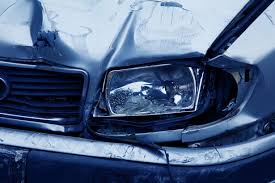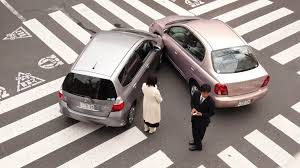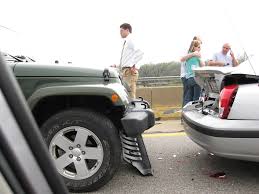Most state financial responsibility laws require proof that you are able to pay for any damage or injury you may cause while driving. Auto insurance is the way that most people comply with these laws. Typically compliance only takes liability insurance at some minimal limit that varies by state. Liability coverages include the following:
 Bodily Injury Liability¬†‚Äď insures against injury that you may cause to other persons. The key is that it involves you being held financially responsible for injuries to other persons because of your driving, your ownership or other use of your vehicle.
Bodily Injury Liability¬†‚Äď insures against injury that you may cause to other persons. The key is that it involves you being held financially responsible for injuries to other persons because of your driving, your ownership or other use of your vehicle.
Property-Damage Liability¬†‚Äď handles damage that you may cause to another person‚Äôs property. Again, the coverage only responds when you are financially responsible for such damage and it has to be related to your use or ownership of a vehicle.
Uninsured Motorist Coverage¬†‚Äď This coverage typically pays for injury you suffer from an  accident caused by a person who has no insurance; a person who can’t be located (“hit and run drivers”); or a person who has insurance but their insurance company is insolvent.
accident caused by a person who has no insurance; a person who can’t be located (“hit and run drivers”); or a person who has insurance but their insurance company is insolvent.
Important: Payment under this coverage is controlled by various laws that dictate what limit or limits must be sold. In some states, you may have an option to reject the coverage. Typically, the rejection must be in writing.
Underinsured Motorist Coverage РSimilar to uninsured motorist, it pays for injuries caused by a driver who is inadequately insured. Example: You are seriously injured by someone carrying a bodily injury limit of $25,000, but your injuries are nearly $50,000. Your Underinsured Motorist Coverage limit is $100,000. In this instance, your policy would pay the difference between $25,000 and $50,000.
 Cars are expensive to buy and repair, providing great reasons for protecting them. If you borrowed money to buy your car, or if you leased the vehicle, the lender or leasing company was likely to make certain that you had coverage to pay for any damage to the vehicle. Below are typical coverages that apply either to the vehicle or to those operating the vehicle:
Cars are expensive to buy and repair, providing great reasons for protecting them. If you borrowed money to buy your car, or if you leased the vehicle, the lender or leasing company was likely to make certain that you had coverage to pay for any damage to the vehicle. Below are typical coverages that apply either to the vehicle or to those operating the vehicle:
Collision coverage РThis covers damage to your own vehicle that happens when your vehicle runs into another object, such as other vehicles, trees, light poles, mountains, etc.
Other Than Collision coverage РThis also covers damage to your own vehicle that is due to sources such as fire, theft, hitting an animal, vandalism, earthquake, flood or hail.
Collision and Other Than Collision coverages are subject to deductibles (the amount a policyowner must pay). They eliminate the need for an insurer having to pay for very minor losses.
Personal Injury Protection or Medical Expense¬†‚Äď This coverage typically handles medical expenses for injuries to you, your passengers or people who are “around” you. It may also cover you and your household if you, as a pedestrian or a bicyclist, are struck by an automobile.
Towing and Labor coverage¬†– This coverage is to help pay for your costs to deal with a disabled car. It could help pay for the car to be towed to a service station or for any repair that occurs at the location of the car’s breakdown. Note that this coverage is for labor rather than the costs of car parts. Available coverage is minimal (often $25-$75).
Rental Reimbursement¬†– This coverage reimburses your expense of renting a car as a temporary replacement. The car being replaced must be an insured car that’s unavailable for use because of it being damaged, lost (stolen) or destroyed in a covered loss.
Important: This is merely an introduction to complex policy coverages. Be sure to contact your agent for detailed insurance information.
COPYRIGHT: Insurance Publishing Plus, Inc. 2017
All rights reserved. Production or distribution, whether in whole or in part, in any form of media or language; and no matter what country, state or territory, is expressly forbidden without written consent of Insurance Publishing Plus, Inc.

 Contact
Contact
 Email an Agent
Email an Agent

 Click to Call
Click to Call Get Directions
Get Directions


